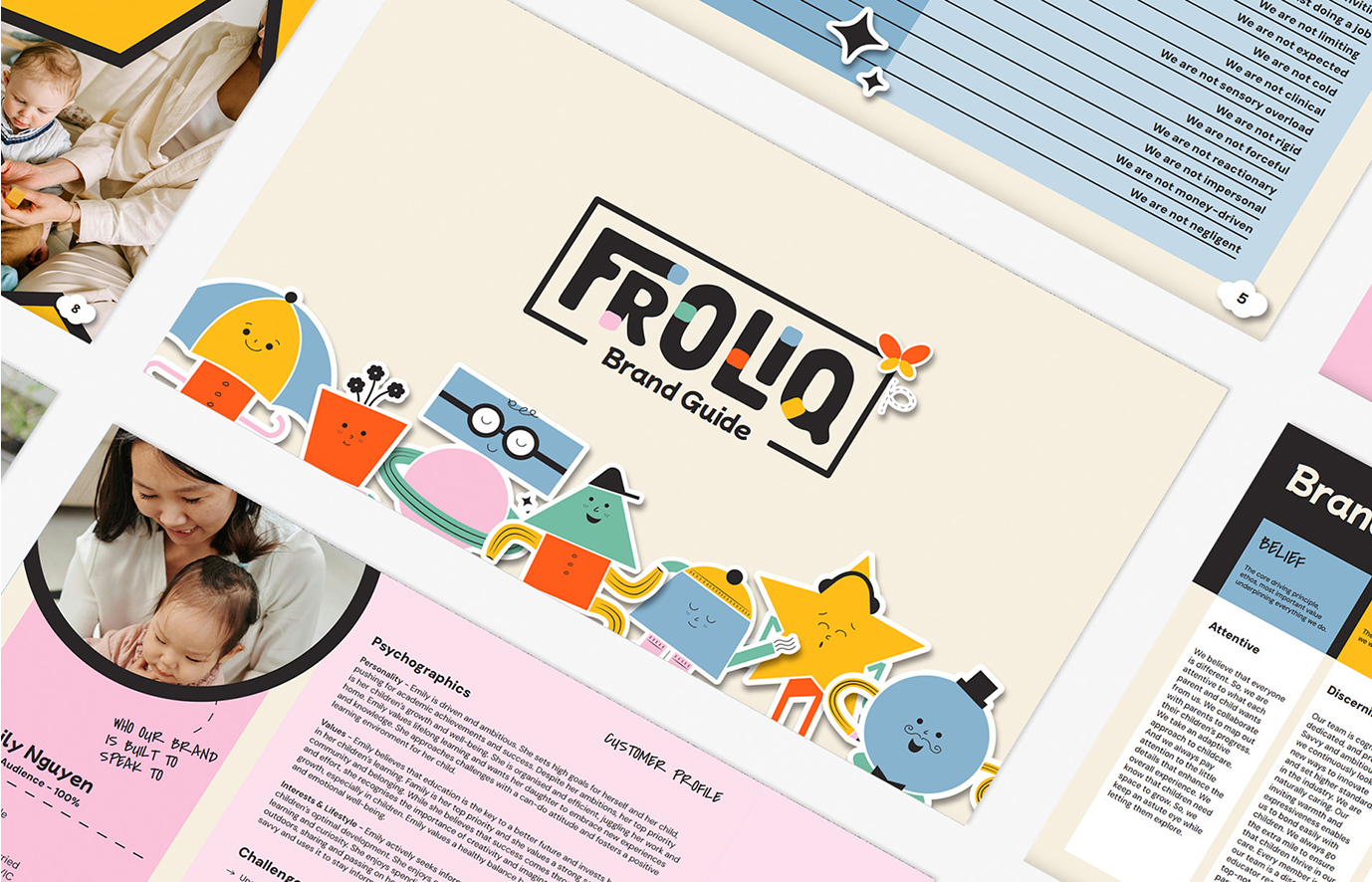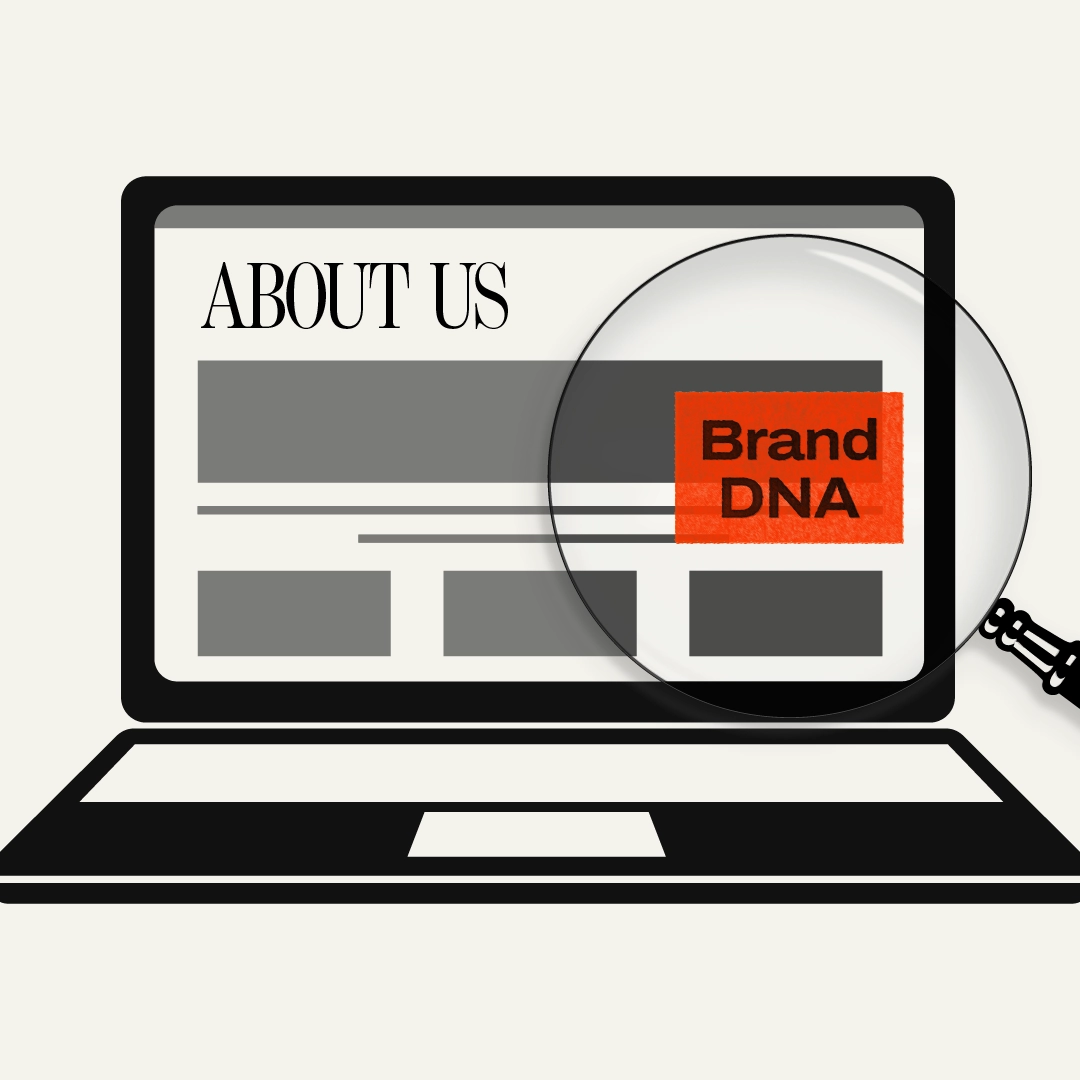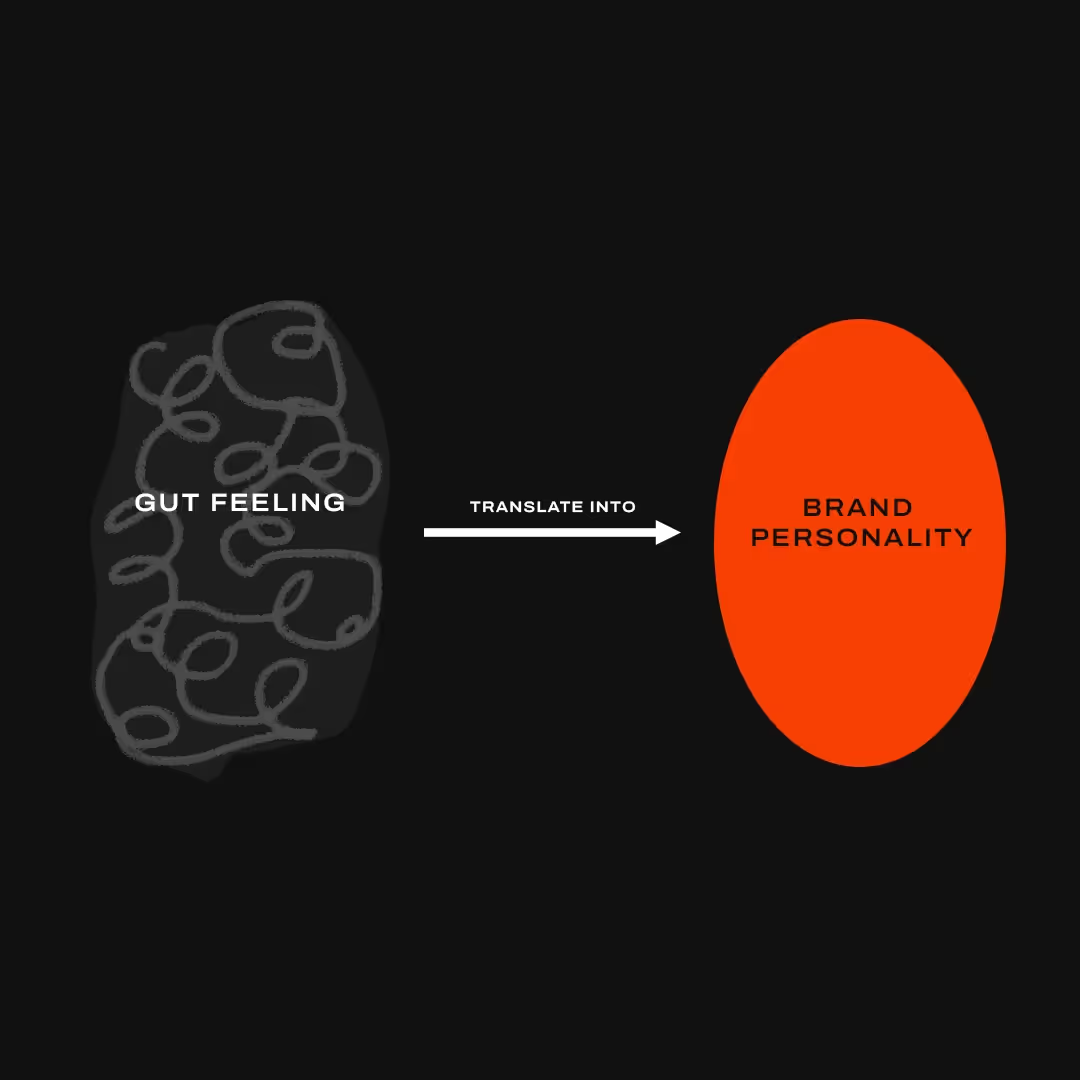Setting the Stage: The Creation of Effective Brand Guidelines
Dive into what brand guidelines are and how they ensure brand consistency across mediums.


Having clear guidelines reduces the risk of inconsistent or off-brand messaging when multiple team members or external partners are involved in executing marketing efforts. It ensures that everyone responsible for brand representation understands how to align their work with the brand's identity. This consistency in messaging and visual elements helps to avoid confusing or diluting the brand in the eyes of the audience.
What is a brand guideline?
Brand guidelines are a set of rules that explain how a brand should be presented through its visual elements and tone of voice.
Brand guidelines are a reference point for ensuring consistent communication and maintaining brand identity. Brand guidelines play a crucial role in establishing a solid and recognizable brand, regardless of the industry or size of the business. By adhering to these guidelines, all marketing materials and touchpoints, whether a website, social media posts, or print materials, will have a cohesive and unified look and feel. Moreover, brand guidelines help to protect the brand's integrity.
Examples of Compelling Brand Guidelines
Asana and Slack are popular collaboration and communication tools that have developed strong brand identities. While specific details of their brand guidelines may not be publicly available, we can analyze some key features and strengths based on their branding and communications.
- Visual Consistency: Asana maintains a consistent visual identity across its platforms, website, mobile app, and marketing materials. Their signature pink color scheme, clean design, and straightforward typography create a cohesive and recognizable brand.
- Brand Messaging: Asana's brand messaging focuses on productivity, collaboration, and simplifying work processes. Their tone of voice is casual, friendly, and empowering. By consistently conveying this message, Asana has established itself as a reliable and user-friendly tool for teams.
- User-Centric Approach: Asana's brand guidelines prioritize user-centric design and communication. They may emphasize the importance of understanding their target audience's needs and pain points, reflected in their user-friendly interface and messaging.
- Playful Brand Personality: Slack is known for its lively, witty, and approachable personality. Their communications often include friendly and casual language. This differentiates them from traditional and formal business communication tools, appealing to a younger audience.
- Versatile Color Palette: Slack's brand guidelines likely include a flexible color palette for different applications and variations. Using multiple colors, such as their signature primary color logo, adds vibrancy to their branding while maintaining consistency.
- Community Engagement: Slack's brand guidelines may encourage community engagement and user-generated content. By enabling users to share their experiences and creative uses of the platform, Slack has fostered a sense of belonging and loyalty among its user base.
Essential Components of Brand Guidelines

- Logo Usage and Variations
Brand guidelines should include clear instructions on using a logo, as it is one of a brand's most easily recognizable elements. This includes guidelines on minimum size, spacing, color variations for different backgrounds, and how to use the logo in other contexts (e.g., horizontal or vertical orientation).
- Typography, Color Palette, and Imagery
Consistent typography is essential for maintaining a cohesive brand identity. Guidelines should include specifications for font styles, sizes, and spacing. A well-defined color palette helps create visual harmony, and brand guidelines should provide guidelines on primary and secondary colors, along with their respective uses. Choosing visual elements that align with the brand's personality and values is crucial to maintaining consistency and coherence. Appropriate guidelines on imagery selection and style can help achieve this.
- The Tone of Voice and Messaging
Brand guidelines should also outline the brand's tone of voice and messaging. This includes guidelines on the style of writing, preferred language, and the emotions the brand aims to evoke in its communication. Consistency in tone of voice helps build familiarity and reinforces the brand's personality.
One-Page and Simple Brand Guidelines
One-page brand guidelines have gained popularity due to their simplicity and ease of reference. For businesses with limited resources or those looking for a streamlined approach to brand communication, concise style guides can be particularly advantageous.
Condensing brand guidelines into a single page can help businesses effectively communicate their brand identity and guidelines to internal and external stakeholders. One-page brand guidelines eliminate unnecessary complexity and provide a quick reference for designers, marketers, and content creators, ensuring consistent communication across different channels.
MailChimp's one-page brand guidelines showcase the effectiveness of simplicity and functionality in delivering a clear brand identity. By condensing its guidelines concisely, MailChimp ensures that its brand communication remains consistent and easily understood by internal and external stakeholders.
Including a short mission statement in their one-page brand guidelines establishes the purpose and values of the brand. This succinctly communicates what MailChimp stands for and helps align all brand efforts toward a common goal.
Logo variations are crucial in maintaining visual consistency across different applications. MailChimp's one-page brand guidelines ensure that all approved logo variations are presented, allowing for a unified brand presence across various touchpoints. This consistency helps in instant brand recognition and strengthens the overall brand equity.
Tips for Creating a Simplified Brand Guide
Creating a simplified brand guide is an intelligent approach to ensure your brand guidelines are easy to understand, implement, and maintain. Here are eight (8) tips to consider when developing a simplified brand guide:
- Identify critical elements: Start by identifying the key aspects of your brand that need to be included in the guide. This typically includes your logo, color palette, typography, and messaging guidelines. These elements form the foundation of your brand identity and should be clearly defined in your brand guide.
- Focus on the essentials: Keep the content of your brand guide concise and to the point. Avoid overwhelming readers with excessive information or unnecessary details. Focus on the essential aspects of maintaining your brand's consistency, coherence, and integrity.
- Keep it visual: Use visual elements such as clear examples, diagrams, and graphics to communicate your brand guidelines effectively. Visual representations make it easier for readers to understand and apply the guidelines. Use visuals to demonstrate correct logo usage, color combinations, and typography specifications.
- Use simple language: Write in plain and straightforward language. Avoid technical jargon or complex terminology that may confuse readers. The goal is to make the brand guide accessible to a broad audience, including employees, designers, and partners who may not have a deep understanding of design or branding principles.
- Provide context and explanations: While the focus is on simplicity, it is still essential to provide context and explanations where needed. Help readers understand the reasoning behind specific guidelines and how they contribute to brand identity. This can enhance their understanding and ensure that procedures are followed with intention.
- Organize information logically: Structure your brand guide with clear headings and sections. Consider using a table of contents or a visual index to help readers quickly find the necessary information. This organizational structure will make the guide easier to navigate, especially if it needs to be referred to frequently.
- Include usage examples: Whenever possible, provide real-life examples of correct brand usage to help illustrate your guidelines. Showcase how the logo should be applied in different contexts, such as on business cards, websites, or merchandise. These examples can clarify any ambiguity and serve as a reference for brand consistency.
- Update and evolve: A simplified brand guide doesn't mean it should be set in stone. Updating your brand guide is essential as your brand grows and adapts to new trends and challenges. Regularly review and revise your brand guide to reflect any changes in your brand identity or strategic direction.
We are a team of branding experts who will help you craft the best plan of attack for your business.

Small Business Brand Guidelines

Brand guidelines are a valuable tool for small businesses to effectively communicate their brand identity and values. Providing instructions and rules ensures that the brand's message is consistent across all touchpoints, building customer trust and setting the business apart from its competitors.
Tips for Creating Brand Guidelines as a Small Business
- Tailor guidelines to your resources and scale: Small businesses often have limited resources, unlike large corporations with dedicated teams and substantial budgets. When creating brand guidelines, it is important to tailor them to your specific resources and scale. Consider the capabilities of your in-house team, budget constraints, and the size of your operation.
- Highlight your unique selling proposition: As a small business, it is essential to highlight your unique selling proposition (USP) in your brand guidelines. Emphasize what sets you apart from competitors and clearly define your brand's core values, mission, and vision. Leverage your agility, personalized service, local presence, or niche expertise as distinctive factors in your brand guidelines.
- Be agile and adaptable: Small businesses must adapt to changing market conditions and customer needs. Your brand guidelines should reflect this flexibility and allow for experimentation and evolution. While maintaining consistency, create guidelines that leave room for creativity and innovation.
- Communicate your brand story: Your brand guidelines should communicate and connect with your target audience. As a small business, you have the advantage of being able to establish personal connections with customers. Showcase your company's history, values, and the people behind the brand.
- Prioritize local community engagement: Small businesses often connect more to the local community than large corporations. Your brand guidelines should outline strategies for engaging with and supporting the local community. This can include partnerships with local organizations, sponsoring events, or implementing sustainable practices.
- Leverage digital marketing channels: In today's digital age, small businesses can leverage technology and digital marketing channels to reach a wider audience. Your brand guidelines should include recommendations on maintaining brand consistency across various online platforms, including social media, websites, and email marketing.
- Encourage employee advocacy: In small businesses, employees often play a crucial role in brand advocacy. They are the face of your brand and can help amplify your message. Encourage your employees to align with and represent your brand values. Provide guidelines on how they can communicate and promote the brand online and offline.
- Seek customer feedback: Small businesses can have a closer and more direct relationship with customers. Take advantage of this by actively seeking customer feedback and incorporating it into your brand guidelines. Their insights can help you understand their perception of your brand and make necessary adjustments to the guidelines.
Creative and Unique Brand Guidelines

Some brands go beyond the traditional approach and create innovative and visually appealing brand guidelines that genuinely reflect their unique identity.
Skype's brand guidelines feature animated visuals and interactive elements, making them innovative and visually appealing. These dynamic elements bring the brand to life and provide an immersive experience. Despite the creative approach, the guidelines offer a comprehensive overview of the brand's visual language. They maintain consistency and coherence while leaving a lasting impression on the reader. By embracing creativity and innovation, Skype's brand guidelines showcase the brand's personality and create a memorable experience for users.
How to Think Outside the Box when creating your Style Guide
When creating a style guide, thinking outside the box involves breaking conventional norms and exploring new possibilities to express your brand identity. Here are some examples of how to do this:
- Embrace non-traditional formats: Instead of a standard PDF or printed document, consider creating a style guide using unconventional formats such as a website, video, or mobile app.
- Use storytelling techniques: Instead of presenting your brand guidelines dry and technical, consider using storytelling techniques to make them more relatable and memorable.
- Collaborate with designers and agencies: Working with designers and creative agencies can bring fresh perspectives and expertise to your style guide. They can help you explore innovative design concepts, typography, color schemes, and layouts that align with your brand's personality and values.
Social Media Brand Guidelines

Social media has become a powerful tool for businesses to connect with their audience and promote their brand.
For instance, Wendy's has an engaging and consistent social media presence. Their brand guidelines are vital to ensure that their Facebook and Instagram posts always reflect their distinct tone of voice and use similar visual elements. Wendy's is known for its sassy and humorous approach, and its guidelines help showcase its personality in every interaction with its audience. By following its brand guidelines, Wendy's can effectively maintain their unique brand identity, create a loyal following, and generate meaningful engagement on various social media platforms.
Reddit is an excellent example of a brand that maintains consistent branding on social media platforms. Their brand guidelines prioritize a cohesive visual identity, clear tone, and unique community engagement. With a focus on the iconic Reddit logo, color scheme, and typography, their guidelines ensure that their presence on platforms like X and Facebook is instantly recognizable. By adhering to these guidelines, Reddit creates a unified brand experience that resonates with its target audience and reinforces its position as a leading online community.
Tips for Creating a Social Media-Specific Style Guide
When creating a style guide specifically for social media, consider the following tips:
- Clearly define your brand's tone of voice for social media. Determine whether it should be formal, casual, conversational, or humorous, depending on your brand personality.
- Provide guidelines for captions, hashtags, and emoji usage to maintain consistency in your social media posts.
- Choose a color palette and typography that aligns with your brand, ensuring they are readable and visually appealing on social media platforms.
- Create guidelines for the types of imagery or graphics used in your social media posts to maintain a consistent visual style.
Brand Guidelines for Events and Campaigns

Brand Guidelines for Events and Campaigns are a set of guidelines that provide specific instructions and standards for maintaining brand consistency during events and campaigns. When a company plans and executes events or runs campaigns, it is crucial to ensure that the brand's message, tone, and visual identity remain consistent across all touchpoints.
These guidelines typically involve understanding the brand's identity, values, and objectives before creating the guidelines. Considering the core message, the emotions to evoke, and the distinct aspects that set the brand apart is essential. The guidelines then outline how to implement the brand's messaging and visual style across various materials and channels, such as social media posts, promotions, advertisements, and event setups.
Tips for Creating a Style Guide Tailored to a Specific Event or Campaign
Creating a style guide for an event or campaign requires careful consideration of the event's or campaign's objectives and target audience. Here are some tips to help you create a tailored style guide:
- Clearly define the objectives and desired outcomes of the event or campaign. Understand the target audience you want to reach.
- Develop a visual identity that aligns with the event's or campaign's theme. Consider using unique colors, typography, and visuals that capture the essence of the event or campaign.
- Specify guidelines for promotional materials, including logos, banners, flyers, and social media graphics, ensuring they adhere to the event's or campaign's visual style.
- Incorporate guidelines for messaging and tone of voice to maintain consistency in all event or campaign communications.
Optimizing Brand Guidelines for All Channels

Optimizing brand guidelines for all channels means ensuring your brand's guidelines are adaptable and practical across various communication channels and platforms. Brands must have a strong presence across multiple channels like social media, websites, email marketing, advertising, and more.
Consistency across different channels is crucial for maintaining a cohesive brand identity. Whether your audience encounters your brand through print materials, digital platforms, or other channels, they should have a consistent brand experience. This consistency reinforces brand recognition and builds trust among your audience.
To optimize your brand guidelines for all channels, consider the following tips:
- Ensure your logo is scalable and works well across different mediums, from large banners to small social media icons.
- Define guidelines for typography and ensure that the fonts you select are legible and available in print and digital formats.
- Provide specifications for color usage, including RGB, CMYK, and hexadecimal codes, to ensure consistency across print and digital materials.
- Include guidelines for imagery, ensuring that they are suitable for different resolutions and sizes across various channels.
Conclusion and Call to Action
Brand guidelines are crucial in maintaining consistent and compelling brand communication. They ensure your brand is recognizable, build trust among your audience, and convey a coherent identity across various channels.
Remember, creating brand guidelines is an ongoing process. Regularly review and update them as your brand evolves. By following these steps, you can create a solid and consistent brand identity that resonates with your audience and sets you apart from your competitors.
If you need further assistance or guidance, don't hesitate to seek professional help or utilize online resources dedicated to brand guidelines. Make the most of your brand's potential by creating comprehensive and practical brand guidelines today.
Good news: Our strategies don't, so yours won't have to.

The Accelerator

Building brands with powerful market presence
Leading Brands Choose us
Book in with one of our experts.



























































